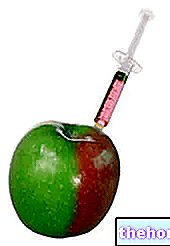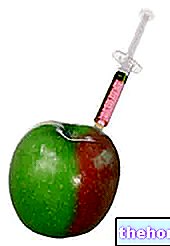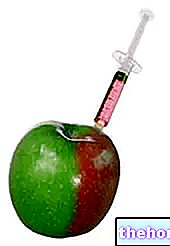
- COLORANTS: are substances that give a color a food or restore its original color; they include natural components of foods and other elements of natural origin, normally not consumed as food or used as a typical food ingredient. According to this regulation, dyes are preparations obtained from foods and other basic edible materials, of natural origin, obtained by a physical and / or chemical process that involves the selective extraction of pigments in relation to their nutritional or aromatic components.
- PRESERVATIVES are substances that extend the shelf life of foods by protecting them from deterioration caused by microorganisms and / or the proliferation of pathogenic microorganisms.
- ANTIOXIDANTS: are substances that extend the shelf life of food, protecting them from deterioration caused by oxidation, such as rancidity of fats and color variations.
- "ACIDITY" REGULATORS: these are substances that control and / or modify the acidity or alkalinity of a food product.
- ACIDIFIERS: are substances that increase the acidity of a food product and / or give it a sour taste.
- ANTIAGGLOMERANTS: are substances that reduce the tendency of individual particles, present in a food product, to adhere to each other.
- SWEETENERS: they are substances used to give a sweet taste to foods or as table sweeteners.
- SUPPORTS: are substances used to dissolve, dilute, disperse or otherwise physically modify a food additive, an aroma, a food enzyme, a nutrient and / or other substances added to foods for nutritional or physiological purposes, without altering their function (and without themselves have a technological effect) in order to facilitate their manipulation, application and use.
- ANTIFOAMING AGENTS: these are substances that prevent or reduce the formation of foam.
- FOAMING AGENTS: these are substances that make it possible to obtain a homogeneous dispersion of a gaseous phase in a liquid or solid food product.
- THICKENERS are substances that increase the density and consistency of a food product
- EMULSIFIERS: these are substances that make it possible to form or maintain a homogeneous mixture of one or two immiscible phases, such as oil and water, in a food product.
- STABILIZERS: these are substances that make it possible to maintain the physico-chemical state of a food product; stabilizers include substances that make it possible to maintain a homogeneous dispersion of one or more immiscible substances in a food product, substances that stabilize, retain or enhance the existing coloring of a food product, and substances that increase the capacity of food to form bonds, including the formation of the reconstituted food.
- THE "LOADING AGENTS": are substances that contribute to increasing the volume of a food product without significantly contributing to its available energy value.
- RESISTANCE AGENTS: these are substances that make or keep the tissues of fruits or vegetables firm or crunchy, or that interact with gelling agents to produce or consolidate a gel.
- THE TASTE ENHANCERS ": these are substances that enhance the flavor and / or fragrance of a food product. The most famous flavor enhancer, and also the most used, is monosodium glutamate.
- GELIFYING AGENTS: they are substances that give consistency to a food product through the formation of a gel.
- MELTING SALTS: these are substances that disperse the proteins contained in the cheese, thus achieving a homogeneous distribution of fats and other components. They are used for the production of melted cheeses such as slices, small cheeses, etc.
- THE SEQUESTRATING AGENTS: they are substances that form chemical complexes with metal ions.
- COATING AGENTS (including lubricating agents): these are substances which, when applied to the external surface of a food product, give it a shiny appearance, or give it a protective coating.
- HUMIDIFYING AGENTS: these are substances which prevent food from drying out by counteracting the effect of low atmospheric humidity, or which promote the dissolution of a powder in an aqueous environment.
- MODIFIED STARCHES: are substances obtained by one or more chemical treatments of food starches, which may have undergone a physical or enzymatic treatment and be acid or alkaline, diluted or bleached.
- PACKAGING GASES: they are gases, different from air, which are introduced into the container before, during or after introducing a food inside the packaging.
- PROPELLENTS: they are gases different from air which expel a food product from a container.
- LEAVENING AGENTS: they are substances, or combinations of substances, which release gas thus increasing the volume of a dough or batter.
- FLOUR TREATMENT AGENTS: excluding emulsifiers, these are substances that are added to the flour to improve its cooking quality.
Flavorings do not appear in the list because they do not fall within the legislative definition of "additives".
FOOD ADDITIVES CAN BE CLASSIFIED IN A "SYNTHETIC" MANNER IN THE FOLLOWING CLASSES WITH THE RELEVANT CORRESPONDING NUMBERING:
110-119 - orange
120-129 - reds
130-139 - blue and violet
140-149 - green
150-159 - brown and black
160-199 - others
210-219 - benzoates
220-229 - sulphides
230-239 - phenols and formates
240-259 - nitrates
260-269 - acetates
270-279 - lactates
280-289 - propionates
290-299 - others
310-319 - gallates and erythorbates
320-329 - lactates
330-339 - citrates and tartrates
340-349 - phosphates
350-359 - sick and fat
360-369 - succinates and fumarates
370-399 - others
410-419 - natural rubber
420-429 - other natural agents
430-439 - derivatives of polyoxyethylene
440-449 - natural emulsifiers
450-459 - phosphates
460-469 - cellulose derivatives
470-489 - derivatives of fatty acids
490-499 - others
510-519 - chlorides and sulfates
520-529 - sulfates and hydroxides
530-549 - salts of alkali metals
550-559 - silicates
570-579 - stearates and gluconates
580-599 - others
630-639 - inosinated
640-649 - others
910-919 - glazes
920-929 - auxiliary agents
930-949 - gas for packaging
950-969 - sweeteners
990-999 - foaming agents





























